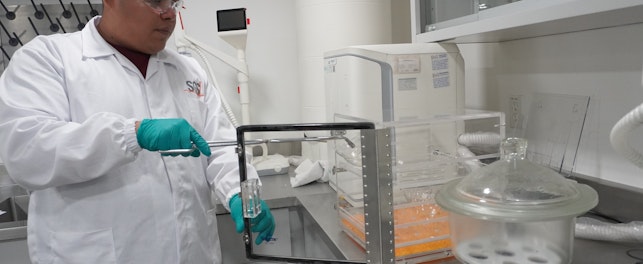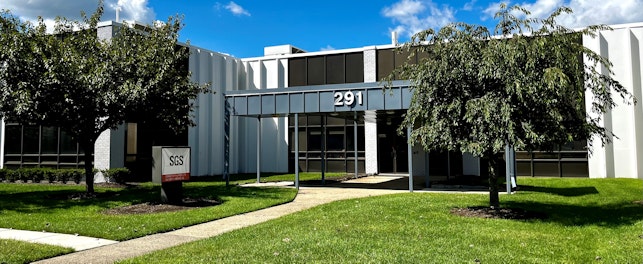Polyester is durable, versatile, affordable, scalable and has a high tensile strength. According to Textile Exchange, it is the textile industry’s most used material, with 47 million tonnes (Mt) in 2022, compared to 23 Mt of cotton, 11 Mt of leather and 4 Mt of nylon.1 As the industry transitions toward circular economies, what barriers and solutions exist for polyester recycling?
The scale of the problem
In 1975, polyester accounted for just 15% of global fiber production. By 2022, its share had grown to 54%, and projections suggest it will reach 67% by 2030.2 However, only 1% of polyester is recycled into new textiles and the vast majority ends up incinerated, landfilled or downcycled, despite taking centuries to decompose and contributing significantly to microplastic pollution and toxic emissions. Addressing this imbalance is critical to building a more sustainable future for the fashion industry.
Sustainability is increasingly a key market driver for consumers, putting pressure on brands to adopt recycled polyester and cut their reliance on virgin, fossil-based inputs. At the same time, tightening legislation, extended producer responsibility (EPR) schemes and carbon reduction targets make recycling a compliance requirement and a competitive advantage.
Legislation impacting the use of polyester includes:
- EU Ecodesign for Sustainable Products Regulation (ESPR) – introduces the digital product passport (DPP) and mandates design criteria such as recyclability and recycled content, with textiles prioritized
- EU Directive 2008/98/EC, the Waste Framework Directive – mandates separate textile waste collections and EPR
- California SB 707 (US Textile Recovery Law) – first mandated EPR scheme in the US that promotes closed-loop recycling, with brand compliance expected by 2030
- EU REACH and per- and polyfluoroalkyl substances (PFAS) restrictions – will impact a wide range of chemicals used in textiles
Textile recycling
Recycling is defined under the EU Waste Framework Directive as: “any recovery operation by which waste materials are reprocessed into products, materials or substances, whether for the original or other purposes.”3 In practice, textile recycling can be either upcycling, where old garments and fabric scraps are made into new clothes, or downcycling, where discarded clothes are turned into lower-value items such as insulation.
The traditional life cycle of a textile product is linear:
- Raw material producer
- Fiber producer
- Yarn spinner
- Fabric manufacturer
- Garment producer
- Retailer
- User
- End-of-life
A better approach is to reduce input quantities at the raw material stage by integrating recycled feedstocks, e.g. from plastic bottles. It is also possible for fibers, fabrics and garments to re-enter the system through second-hand resale, rental models and upcycling.
The goal must be to create a circular economy, where waste within the textile flow, either during production or at end-of-life, is retained in the loop, raw material inputs are reduced and downcycling is delayed.
Recycling polyester
Polyester is currently recycled either mechanically or chemically.
Mechanical recycling is well-established and widely used, often processing PET bottles into textile-grade polyester fibers. This purely physical process does not alter the chemical structure. However, without alterations, fiber quality is largely determined by the input, meaning color and purity can vary. Restricted substances originating from dyes and pigments, finishing agents, plasticizers, microplastics and detergents may remain as residues. Over time, repeated mechanical recycling will also lead to reduced fiber performance.
Chemical recycling differs because it breaks down the polyester into monomers using methods such as glycolysis, methanolysis, hydrolysis and enzymatic depolymerization. However, unlike mechanical recycling, this process does require chemical inputs:
- Glycolysis: ethylene glycol (EG), catalysts like zinc acetate
- Methanolysis: methanol, pressure, heat, possibly sodium hydroxide
- Hydrolysis: sulfuric acid (acidic), caustic soda (alkaline), water/steam
- Enzymatic depolymerization: enzymes (cutinases/esterases), buffers
Risks associated with chemical recycling include:
- Solvents/volatile organic compounds (VOCs) – e.g. methanol, toluene, dimethylformamide (DMF) or dimethyl sulfoxide (DMSO)
- Catalyst residues from de-polymerization and re-polymerization
- Dyes, finishes, coatings and blended fiber residues from post-consumer feedstock
- Restricted substance contaminants from post-consumer textile feedstock – heavy metals, PFAS, phthalates, flame retardants
Once these potential risks are carefully managed, chemical recycling has several key advantages over mechanical recycling:
- Produces virgin-like inputs
- Accepts blended, dyed and contaminated feedstocks as the process can remove toxic substances
- Can be repeated indefinitely, supporting true closed-loop recycling
Ultimately, while mechanical recycling will play an important role in reducing our reliance on raw materials, carefully controlled chemical recycling offers us the clearest path to scalable, clean circularity.
bluesign solutions
bluesign, an SGS company, has been at the forefront of the clean chemistry movement for nearly 25 years. We support brands in eliminating hazardous substances in their supply chains, optimizing resource efficiency and ensuring textiles are safe for both workers and consumers.
Our services advancing polyester recycling include:
- Chemical management assessment – verifying that all chemical inputs are properly handled and potential risks are identified and mitigated
- Purification system verification – ensuring processes effectively remove contaminants to produce safe, virgin-quality recycled polyethylene terephthalate (rPET)
- Emissions and wastewater monitoring – confirming that air emissions (e.g. VOCs) are captured through technologies such as condensers, scrubbers or activated carbon, and that wastewater is treated to meet strict safety standards
- Chemical compliance and consumer safety assessments of recycled polyester – verifying that rPET meets bluesign system black limits (BSBL) and bluesign system substances list (BSSL), as well as regulatory limits and industry standards such as REACH, ZDHC Manufacturing Restricted Substances List (MRSL) and AFIRM Restricted Substances List (RSL)
By combining rigorous chemical expertise with trusted verification, we empower the textile industry to scale polyester recycling responsibly, helping brands meet sustainability goals while protecting people and the planet.
Explore bluesign solutions for a safer and more sustainable textile industry.
Enjoyed this article?
Find more news and updates in our Consumer Compact newsletter >
Delivered direct to your inbox
Subscribe to Consumer Compact >
References
1The Future of Synthetics (Textile Exchange, April 2024)
2Materials Market Report (Textile Exchange, September 2024)
3EU legislation – Waste hierarchy
© SGS Société Générale de Surveillance SA.
16th Floor, Block A, No.73 Fucheng Road, Century Yuhui Mansion,
Beijing, Haidian District, China





